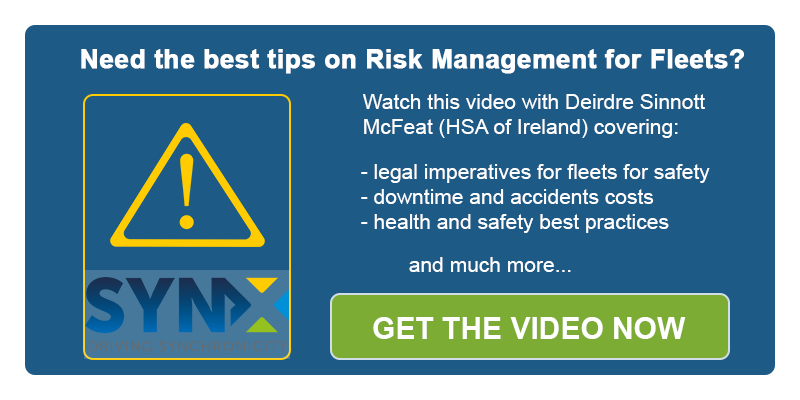If you are in charge of managing health and safety in your company you will probably know that it is many faceted, and raising awareness of the importance of safety is just one aspect. This means not just focusing on reaching the minimum legal requirements, but actively encouraging a safe and professional driving attitude to build a solid company reputation by making efforts to protect workers and other road users, minimise accidents and collisions, downtime and injury costs (not to mention the unquantifiable costs in terms of trauma).
If you take time to consider some of these points you'll probably conclude that having a fleet safety training program is not only desirable, but rather a “must have”... but do you know how to gradually build up a fleet safety training program to prevent road accidents?
Let’s get started with these 6 strategies!

#1 - Get to know the hazards in your workplace
If you want to introduce safety strategies protecting your employees from hazards, you first have to identify, analyse and control them. Establish which activities or behaviours may involve risks for employees or, for example, can be minimised, avoided or carried out in a different way.
#2 - Make sure you know what is legally required
In order to plan for an effective safety training program for business and to correctly instruct drivers and employees, you certainly need to know the rules. Make sure you master what is legally required and that you keep up-to-date with legislation since it is constantly changing.
#3 - Create an objective for your safety training
What do you want your employees to learn from your training? If you set up precise targets for your training, it will be more effective. Think about the tasks that you would like your employees to achieve and then work backwards in order to plan how these goals are be accomplished.
#4 - Create your training program keeping your staff in mind
If you want to create a successful fleet safety training program you will have to keep the characteristics of your employees in mind. Drivers are usually less comfortable with written material than with practical field training, but this might not apply across the board. Choose an adequate type of training for your employees and personalise it, don’t make it a simple read out of rules. Emphasise the importance of the training as it will keep them safer while they carry out their daily tasks
#5 - Make the learning process active
If the training is just a lecture where workers sit passively, it won’t necessarily be successful. Make it lively and interactive with Q&A sessions, encourage participation with simulation of real-life situations, and make liberal use of pictures to illustrate your points. Be a listener and make sure you use the language shared by your workers. Keep it fairly straightforward, not too technical, and avoid jargon.
#6 - Test and evaluate during the training
It is important you test drivers in order to make sure they have correctly understood the concepts underlined throughout the training. Make sure you are obtaining the expected effect out of your training—observe driver behaviour and evaluate results.



